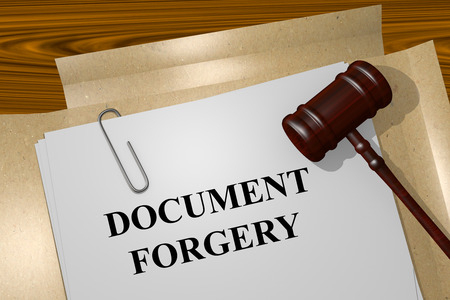Forensic document examiners, or sometimes also referred to as questioned document examiners, are qualified specialists called upon to find forged and non-genuine signatures, replicas, and documents in criminal or sometimes even private cases. It is a precise science that incorporates a wide range of different scientific methods of examining a document for a criminal investigation.

One of the key areas where forensic handwriting analysis differs from the more subjective psycholinguistic method of graphology are techniques and tools used in the forensic document, the
examinations leverage well-established principles of physics and chemistry.
Forensic is the key word here. A certified examiner needs to be confident in using all of them to be able to take on any case. It is vital that all analysts have the best microscopes and light sources at hand to spot changes that graphologists can’t see. This science is about more than what the handwriting style may say about an individual.
This is because it also looks at traits like indentation, machine marks, and erased entries.
Questioned document analysis also requires the comparison of a questioned document against known standards to determine its origin.
Handwriting identification is also necessary when revealing the identity of the hand behind the document and in linking documents together.
Examiners in this field use class characteristics and individual characteristics to learn more about writing patterns and separate the true documents from the forgeries.
Because of this reason there exists a hint of similarity between this science and the nature of graphology.
The difference is that forensic examination is deemed to be a bit more scientific and factual based on data and is respected and acknowledged.
Because of the scientific nature of the methods involved, the results of professional forensic document examination can be used in a court of law.
What Sorts Of Cases And Documents Does Forensic Document Examiner Deal With?
The criminal element of this line of work is crucial here.
Questioned document analysis is often brought in on cases of embezzlement, organized crime, and kidnappings.
Any case where there are key documents that could have been forged or letters that may provide clues to the whereabouts of a culprit or victim.
These trained professionals are mostly brought in to determine whether a legal document or signature has been forged. If it has been altered in a way, then that could have criminal implications.
A lot of the documents are handwritten notes and letters or necessary forms with signatures that may have been copied, faked, or even done by force. Experts can carry out the following examination tools to help a case progress:
- Compare signatures and handwriting to determine the actual author
- Perform light source examinations to look for discrepancies in the use of ink find hidden examples of indented writing and learn part of documents that have been altered or erased.
Then there the machine-generated or typed text documents. Computers have come into play in handwriting assessment more and more in recent years. There are two important reasons for this. First, forge documents and questionable documents are not all handwritten.
